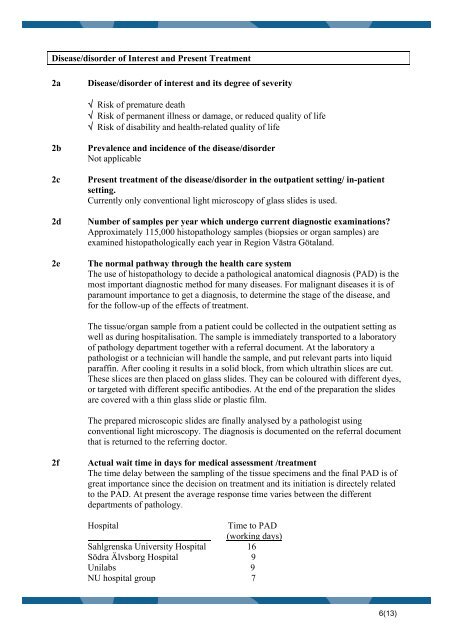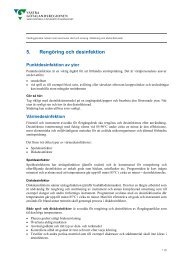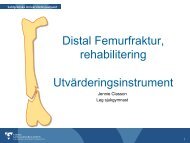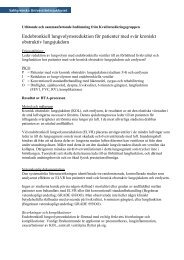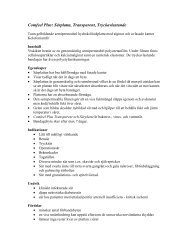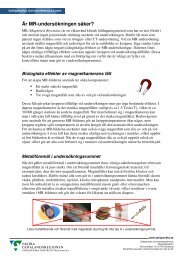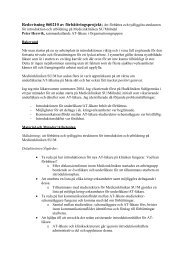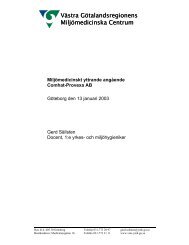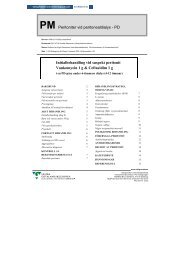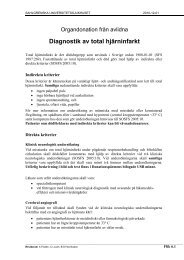Diagnostisk överensstämmelse mellan inscannade digitala ...
Diagnostisk överensstämmelse mellan inscannade digitala ...
Diagnostisk överensstämmelse mellan inscannade digitala ...
Create successful ePaper yourself
Turn your PDF publications into a flip-book with our unique Google optimized e-Paper software.
Disease/disorder of Interest and Present Treatment<br />
2a Disease/disorder of interest and its degree of severity<br />
√ Risk of premature death<br />
√ Risk of permanent illness or damage, or reduced quality of life<br />
√ Risk of disability and health-related quality of life<br />
2b Prevalence and incidence of the disease/disorder<br />
Not applicable<br />
2c Present treatment of the disease/disorder in the outpatient setting/ in-patient<br />
setting.<br />
Currently only conventional light microscopy of glass slides is used.<br />
2d Number of samples per year which undergo current diagnostic examinations?<br />
Approximately 115,000 histopathology samples (biopsies or organ samples) are<br />
examined histopathologically each year in Region Västra Götaland.<br />
2e The normal pathway through the health care system<br />
The use of histopathology to decide a pathological anatomical diagnosis (PAD) is the<br />
most important diagnostic method for many diseases. For malignant diseases it is of<br />
paramount importance to get a diagnosis, to determine the stage of the disease, and<br />
for the follow-up of the effects of treatment.<br />
The tissue/organ sample from a patient could be collected in the outpatient setting as<br />
well as during hospitalisation. The sample is immediately transported to a laboratory<br />
of pathology department together with a referral document. At the laboratory a<br />
pathologist or a technician will handle the sample, and put relevant parts into liquid<br />
paraffin. After cooling it results in a solid block, from which ultrathin slices are cut.<br />
These slices are then placed on glass slides. They can be coloured with different dyes,<br />
or targeted with different specific antibodies. At the end of the preparation the slides<br />
are covered with a thin glass slide or plastic film.<br />
The prepared microscopic slides are finally analysed by a pathologist using<br />
conventional light microscopy. The diagnosis is documented on the referral document<br />
that is returned to the referring doctor.<br />
2f Actual wait time in days for medical assessment /treatment<br />
The time delay between the sampling of the tissue specimens and the final PAD is of<br />
great importance since the decision on treatment and its initiation is directely related<br />
to the PAD. At present the average response time varies between the different<br />
departments of pathology.<br />
Hospital Time to PAD<br />
(working days)<br />
Sahlgrenska University Hospital 16<br />
Södra Älvsborg Hospital 9<br />
Unilabs 9<br />
NU hospital group 7<br />
6(13)


